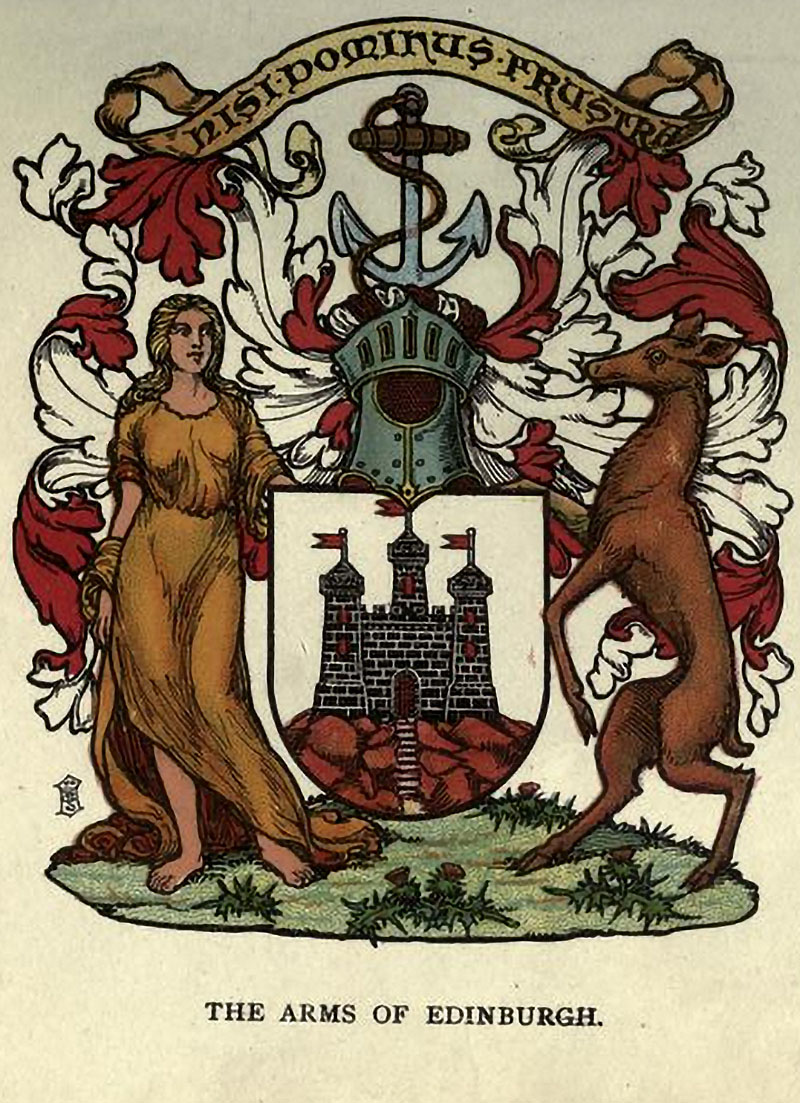
Edinburgh Castle, Edinburgh’s principal landmark.
Without the Lord [all is] in vain.
The crest, an anchor, represents the Lord Provost’s position as Admiral of the Firth of Forth.
Represents the fact that Edinburgh Castle was historically known as the “Castle of the Maidens” probably due to it being used to protect princesses and noblewomen in times of war.
Recalls the city’s patron saint St Giles who spent much of his life in solitude in the forests of Provence with only a doe for company.
The thistle is the national flower of Scotland and has been an important symbol of Scottish heraldry for over 500 years.
The Arms of Edinburgh
See description below.
Author/Artist: Graham Johnston, Herald Painter to the Lyon Court (19th-20th century)
Publisher: T.C. & E.C. Jack
Description: paper, ink
Language: Latin
Repository: A Complete Guide to Heraldry, by Arthur Charles Fox-Davies
Tags: coat of arms, Latin, Scotland, women
The castle represents Edinburgh Castle, Edinburgh’s principal landmark. The crest, an anchor, represents the Lord Provost’s position as Admiral of the Firth of Forth. The dexter supporter, a “woman richly attired with her hair hanging over her shoulders” represents the fact that Edinburgh Castle was historically known as the “Castle of the Maidens” probably due to it being used to protect princesses and noblewomen in times of war. The sinister supporter, a doe, recalls the city’s patron saint St Giles who spent much of his life in solitude in the forests of Provence with only a doe for company. The thistle, growing out of Scottish soil, is the national flower of Scotland and has been an important symbol of Scottish heraldry for over 500 years.
The motto Nisi Dominus Frustra means “Except the Lord in Vain”, a shortened version of a verse from Psalm 127: “Except the Lord build the house, they labour in vain that build it: except the Lord keep the city, the watchman waketh but in vain.”
Source